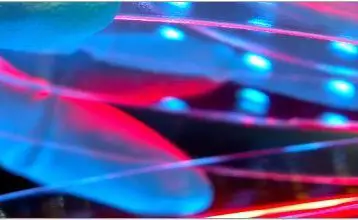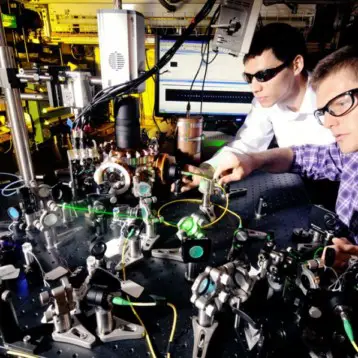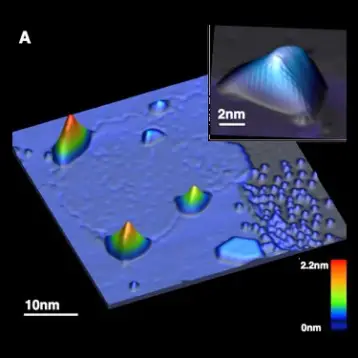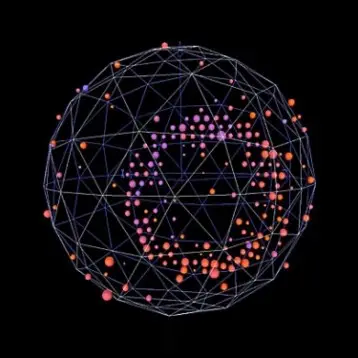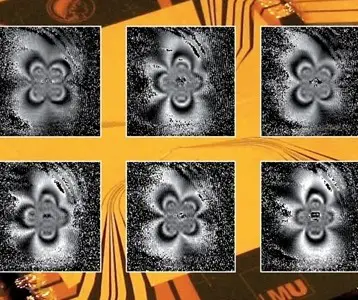|
Huifang Xu, geologist and crystal specialist from the University of Wisconsin-Madison led the team of researchers on this project. During their study, which was published March 2 in the Journal of Physical Chemistry Letters, they grew nanocrystals of two common crystals, zinc oxide and barium titanate. Afterwards, the crystals were placed in water. When pulsed with ultrasonic vibrations, the nanofibers flexed and catalyzed a chemical reaction to split the water molecules into hydrogen and oxygen.
The next stage was to try and bend the fibers. The team found that asymmetries in their crystal structures generated positive and negative charges; the result was the creation of an electrical potential. This phenomenon, called the piezoelectric effect, has been well known in certain crystals for more than a century and is the driving force behind quartz clocks and other applications.
Piezoelectricity is the ability of some materials (usually crystals and certain ceramics) to generate an electric field or electric potential in response to applied mechanical stress. The effect is closely related to a change of polarization density within the material’s volume. If the material is not short-circuited, the applied stress induces a voltage across the material.
Xu and his colleagues applied the same idea to the nanocrystal fibers. “The bulk materials are brittle, but at the nanoscale they are flexible,” he said, like the difference between fiberglass and a pane of glass.
Since smaller fibers bend more easily than larger crystals, they also produce electric charges easily. So far, the researchers have achieved an impressive 18 percent efficiency with the nanocrystals, higher than most experimental energy sources. “Because we can tune the fiber and plate sizes, we can use even small amounts of [mechanical] noise, like a vibration or water flowing,” says Xu. He explains that the purpose is “to bend the fibers and plates; with this kind of technology, we can scavenge energy waste and convert it into useful chemical energy.”
While other scientists might have tried to harvest this electrical energy directly, the team took a different approach: they used the energy to break the chemical bonds in water and produce oxygen and hydrogen gas. “This is a new phenomenon, converting mechanical energy directly to chemical energy,” Xu says excitingly, calling it a piezoelectrochemical (PZEC) effect.
According to the study, the chemical energy of hydrogen fuel is more stable than the electric charge; it is relatively easy to store and will not lose potency over time. With the right technology, the team envisions this method being useful for generating small amounts of power from a multitude of small sources. For example, walking could charge a cell phone or music player and breezes could power streetlights.
|
“We have limited areas to collect large energy differences, like a waterfall or a big dam,” says Xu, “but we have lots of places with small energies. If we can harvest that energy, it would be tremendous.”
The new paper, which is co-authored by graduate student Kuang-Sheng Hong, research scientist Hiromi Konishi, and mechanical engineering professor Xiaochun Li, all at UW-Madison, “provides a simple and cost-effective technology for direct water splitting that may generate hydrogen fuels by scavenging energy wastes such as noise or stray vibrations from the environment,” the authors say.
The research is supported by grants from the UW-Madison Graduate School, National Science Foundation, NASA Astrobiology Institute, and the U.S. Department of Energy. While the research’s future is unknown, the team is optimistic. “This new discovery may have potential implications in solving the challenging energy and environmental issues that we are facing today and in the future,” they conclude.
TFOT has also covered a new catalyst that makes efficient fuel cells feasible, developed at the U.S. Department of Energy’s Brookhaven National Laboratory, and the development of a biofuel based on wood and straw that could sell for as little as 0.50 Euros per liter. Other related TFOT stories include the Sony Hybrid Fuel Cell exhibited at the Fifth International Hydrogen and Fuel Cell Expo (2009), and the production of hydrogen from aluminum and water made at Pennsylvania State University and Virginia Commonwealth University.
For more information about turning water into hydrogen fuel, see University of Wisconsin-Madison’s press release.





